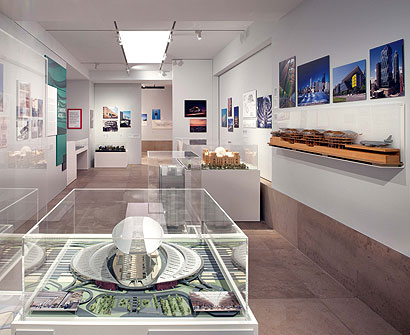|
|
||
|
The first years of the new millennium were an exciting time for an architecture student to be starting on the long journey to receive the all-important RIBA Part III qualification. We had been promised that things could only get better and it seemed as if they were. My fellow undergraduates and I were fresh out of secondary school and entering a world that had placed British architecture on a pedestal. British architecture had conquered the world and was now transforming the post-industrial cities of the UK with exciting cultural centres, parks, bridges and stadiums paid for by the National Lottery (that also just might make us all millionaires). We were badly photoshopping images of gleaming towers and domes and cultural institutions on to precedent panels and apeing their style in our naive experiments with form and space. But, quite early on, we also learned about architects – those people we wanted to be; the creators of the buildings we were so excited by. Those buildings that were the foundations of the bright future we were going to build were designed not by hip young idealists with a cool haircut, but by really old men. The magnificent six: Grimshaw, Foster, Rogers, Farrell, Michael and Patty Hopkins are The Brits Who Built the Modern World. A show at the new RIBA gallery in London and a three-part documentary on BBC4 tell their story. The approach of both is celebratory (perhaps rather close to an eulogy in tone) and it addresses a general public that architectural discourse so often ignores. The TV show, narrated by Rebecca Front, is an enjoyable and uncritical view of the evolution of each architect’s career. Architecture on TV rarely works well; the profession often forgets that the minutiae of how things are conceived and made does not appeal to a large audience. TV demands that the process has to be condensed into a few soundbites and quick cut images. So we are left with a greatest hits package that, like the old Open University programmes that used to air late at night, feels like it could be relayed to school classrooms by day. The first episode explains that the architects were tired of modernism in the UK and went to the US to find inspiration. We then move to the 1980s when Farrell scandalously defected to postmodernism and the giants fought each other for prestigious commissions to build banks and airports. The second episode is the most interesting of the three; the figures of Thatcher and Prince Charles loom large. Charles, a vociferous critic (particularly of Rogers), is presented, pretty accurately, as an anachronistic stooge. Thatcher, and the culture she bred, provided British architects with the opportunity to build – and to make money. The short section on the Lloyds building concludes: “If Rogers’ creation was a cathedral, then the god it worshipped was money.” It really is money that sets these architects apart from their predecessors, who had to find notoriety or success in the local authority architect’s drafting room. This generation realised that it would not get anything built in a system that was being dismantled. It was also aware that it would not make any money unless it looked abroad. Far from providing a foundation for future generations, it has created a new system in which architects scrap for big projects and nominal fees. The Brits who built the modern world are revered for enduring, important creations; it’s also clear that it will be a long time before anyone gets beyond them. The architectural pioneers are now Lords and Sirs; they are the establishment. I never got my Part III. The Brits who Built the Modern World, RIBA, London Until 27 May 2014 The Brits who Built the Modern World, BBC4
|
Words Owen Pritchard |
|
|
||





















